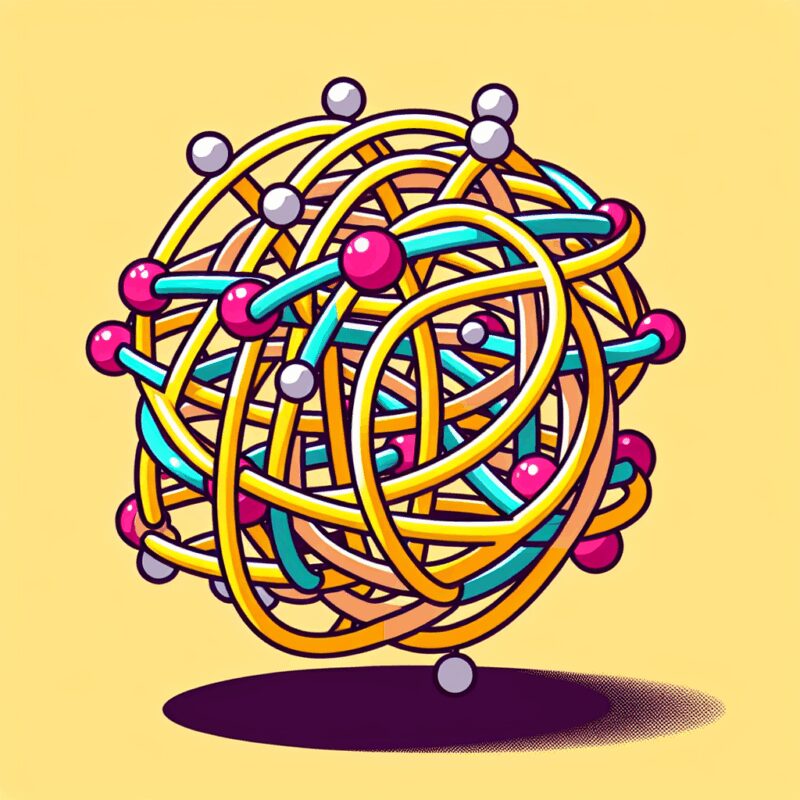
Understanding Renormalization
Renormalization might sound like a complex concept reserved for scientists donning lab coats, but it’s a bit like adjusting a blurry photo to make it clearer. Imagine taking a picture where some parts are unclear. Renormalization helps to sharpen the image by focusing on important details while disregarding less significant noise. In physics, this process is crucial in making sense of theories that deal with forces and particles at incredibly small scales, like atoms and subatomic particles. It’s a tool that helps physicists make predictions about how these tiny particles behave, even when interactions seem too complicated to understand at first glance.
What is a Group Flow?
Group flow is another intriguing concept. Imagine a river flowing smoothly from a mountain to the sea. At each point along the river, the water’s speed and direction may vary, but the overall movement is consistent. In the realm of physics, group flow refers to how changes in scale affect the behavior of a physical system. It’s like zooming in and out on a map to see different levels of detail. In higher-dimensional theories, this flow helps scientists understand how forces like gravity and electromagnetism behave when viewed at different scales. This is crucial for developing unified theories that work across all dimensions, not just the familiar three dimensions of space and one of time.
Restoration of Lattice Gauge Theory in the Continuum LimitHigh Dimensions Explained
Thinking about higher dimensions can be mind-boggling. Imagine living in a two-dimensional world, like a flat piece of paper. Everything is experienced in length and width, but not height. Now, envision a creature suddenly entering a three-dimensional world. This new dimension opens up countless possibilities and interactions previously unimaginable. In physics, contemplating higher dimensions allows scientists to explore theories that might explain more about our universe. These dimensions are not just fantasies; they offer frameworks for understanding complex phenomena such as black holes and the fundamental forces of nature. By using higher dimensions, physicists can propose solutions to long-standing puzzles in theoretical physics.
Precision Calibration Methods in Top Quark Mass MeasurementRenormalization in High Dimensions
Renormalization in higher dimensions is like upgrading a toolkit to fix a more complicated machine. When physicists deal with higher-dimensional spaces, the usual rules of physics need adjustment. Renormalization helps by offering a structured way to handle infinities and other complications that arise. It’s like having a specialized manual for understanding how things work in a world with more than three dimensions. This process is essential for developing theories like string theory, which posits that everything in the universe is made up of tiny, vibrating strings. By applying renormalization group flow in higher dimensions, scientists can investigate these string interactions without their equations spiraling into chaos.
Theory of BEC-BCS Crossover and SuperfluidityWhy It Matters
The application of renormalization group flow in higher dimensions is not just an academic exercise; it holds significant implications for the future of physics. By refining our understanding of how forces operate at different scales and dimensions, scientists can develop more comprehensive models of the universe. These models could potentially unify the fundamental forces of nature, leading to breakthroughs in technologies and a deeper understanding of our place in the cosmos. Furthermore, this research could inform the development of new materials or technologies that leverage the properties of these higher-dimensional spaces, much like how quantum mechanics has revolutionized computing and communication.
Restoration of Lattice Gauge Theory in the Continuum Limit
Everyday Analogies
Zooming In and Out
Consider the process of zooming in and out on a digital map. At a broad view, major highways and cities are visible, while finer details like small roads and parks become apparent as the zoom increases. Renormalization and group flow in physics serve a similar purpose, allowing scientists to focus on different scales of a problem. This ability to adjust perspective is crucial for understanding complex systems and making accurate predictions.
Adjusting a Recipe
Imagine adjusting a recipe to serve more people. The ingredients remain the same, but their quantities change to fit the new scale. Renormalization works similarly by maintaining the core principles of a theory while adapting its parameters to fit new conditions or scales. This flexibility is essential for applying theories to different scenarios, particularly when dealing with the grand scale of the universe or the minute scale of subatomic particles.
Spontaneous Symmetry Breaking via Higgs MechanismConclusion
Renormalization group flow in higher-dimensional theories is a powerful tool in the physicist’s arsenal. It helps bridge the gap between abstract mathematical concepts and tangible physical phenomena. By breaking down these complex ideas into more digestible analogies, a greater appreciation for the elegance and utility of these theories emerges. As research continues, the hope is to unlock new insights into the universe’s most profound mysteries, paving the way for technological advancements and a deeper understanding of reality itself.
관련 글: Restoration of Lattice Gauge Theory in the Continuum Limit
Anomalies and Instanton Effects in Quantum Chromodynamics
[…] Application of Renormalization Group Flow in Higher Dimensional Theories […]